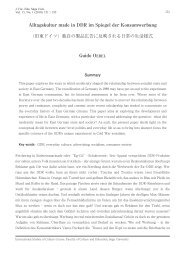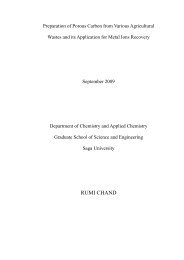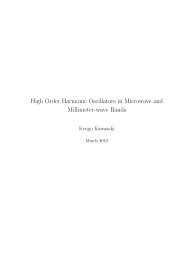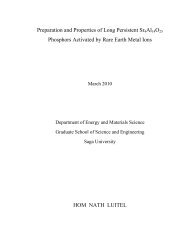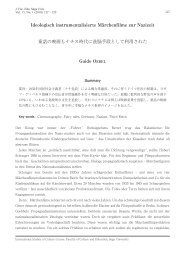ε (eV)
ε (eV)
ε (eV)
Create successful ePaper yourself
Turn your PDF publications into a flip-book with our unique Google optimized e-Paper software.
1.4 Objective and structure of this thesis<br />
The aim of this thesis was to understand, by following a rigorous experimental<br />
approach, some of the physical phenomena involved in the disinfection or/and<br />
sterilization processes of the bacterial spores with inactivation agents produced<br />
within a low pressure RF discharge. Much of the work has been carried out to<br />
establish the relative effects of each killing agent generated by plasma [70-75].<br />
From this point of view, the discrimination of the role of different inactivation<br />
agentsischallenging,becauseitisdifficult to isolate the effect of one particular<br />
agent by suppressing the production of others.<br />
Regarding the heat effects on the contaminated samples the conditions to op-<br />
erate the discharge were changed. The plasma was pulsed to bring the advantage<br />
of a much low heat absorbed by the treated objects. Moreover, how the kinet-<br />
ics of microorganisms inactivation is affected by pulsed plasma operation mode<br />
(i.e., pulse characteristics) has not yet been systematically studied. Therefore, the<br />
present thesis covers in its second part the aspects of the sterilization with pulsed<br />
plasma. It is necessary to mention that, for microbiological testing procedures,<br />
Bacillus subtilis spores (Bss) were used.<br />
Thethesisisorganizedasitfollows:<br />
Chapter 2 contains the description of the experimental RF plasma reactor,<br />
including the treatment chamber geometry and the electrical circuitry used to<br />
accomplish the experimental investigations. Microbiological procedures are pre-<br />
19



